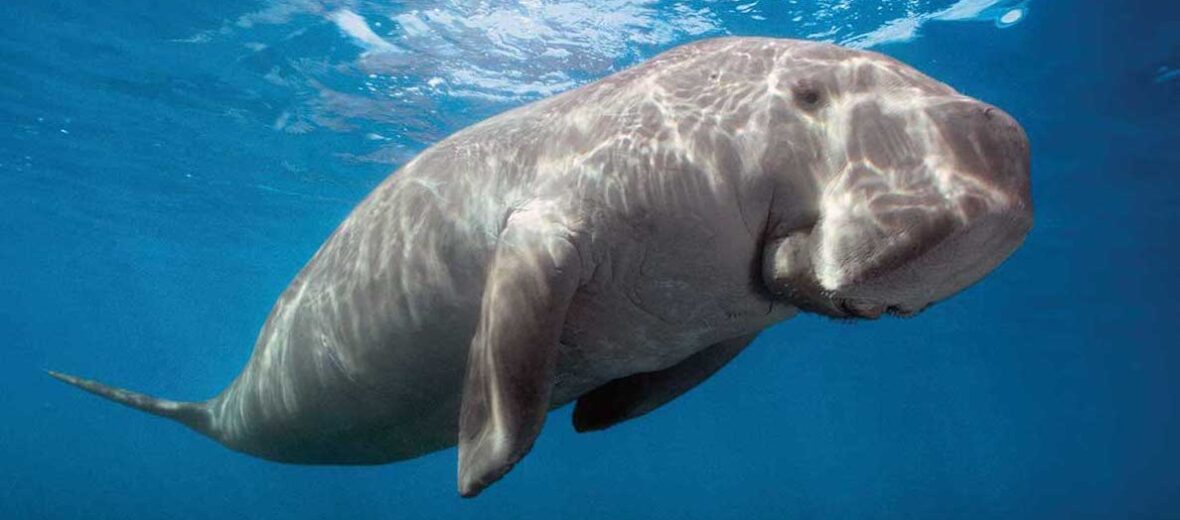
The slow moving, gentle dugong is the only strict oceanic mammalian herbivore (eats only plants). These beautifully odd creatures are on the brink of extinction due to several factors, including hunting, pollution, drowning fatalities from fishing nets, and environmental decline. They also may have been the inspiration for tales of mermaids. They can be found in coastal waters off of the Red Sea, East Africa, Australia, Japan, and the Philippines.
First the Stats…
Scientific name: Dugong dugon
Weight: Up to 800+ lbs.
Length: Up to 8.4 feet
Lifespan: Up to 70 years
Now on to the Facts!
1.) The dugong has a specially evolved mouth that allows for easy grazing of sea grass. They graze day and night.
2.) They can consume up to 90 lbs. of sea grass a day!
3.) Being a mammal they have to surface to breathe air approximately every 5 – 6 minutes.
4.) These cool critters communicate with chirp-squeaks, trills, and even barks.
5.) They typically swim slowly at about 6 mph. They can accelerate if needed to 12 mph.
But wait, there’s more on the dugong!
6.) During pubescence the males develop tusks. Females do not.
7.) Their primary predators are crocodiles, orcas, sharks, and humans.
Did you know…?
In shallow waters these creatures are able to prop themselves up on their tails breaching the water with their heads.
8.) Gestation (pregnancy) lasts 1 year and yields a single calf.
9.) Dugongs typically keep to themselves or exist in pairs. Though they have been seen in herds of 100 or more, on rare occasions!
10.) The dugong is now legally protected throughout their range, however populations are still listed as Vulnerable by the IUCN.
Now a Short Dugong Video!
Also, check out the Critter Science YouTube channel. Videos added frequently!
Want to suggest a critter for me to write about? Let me know here.



